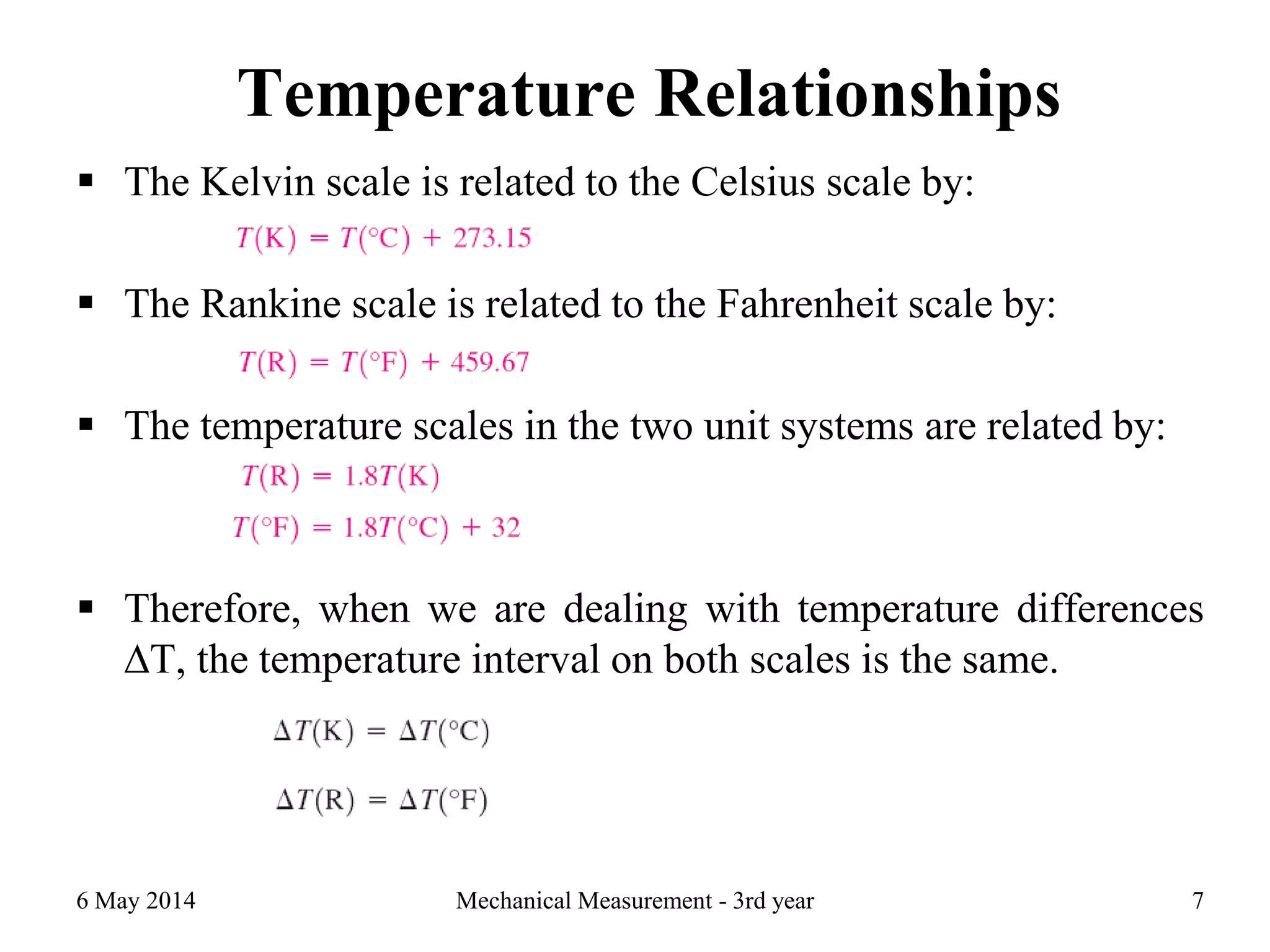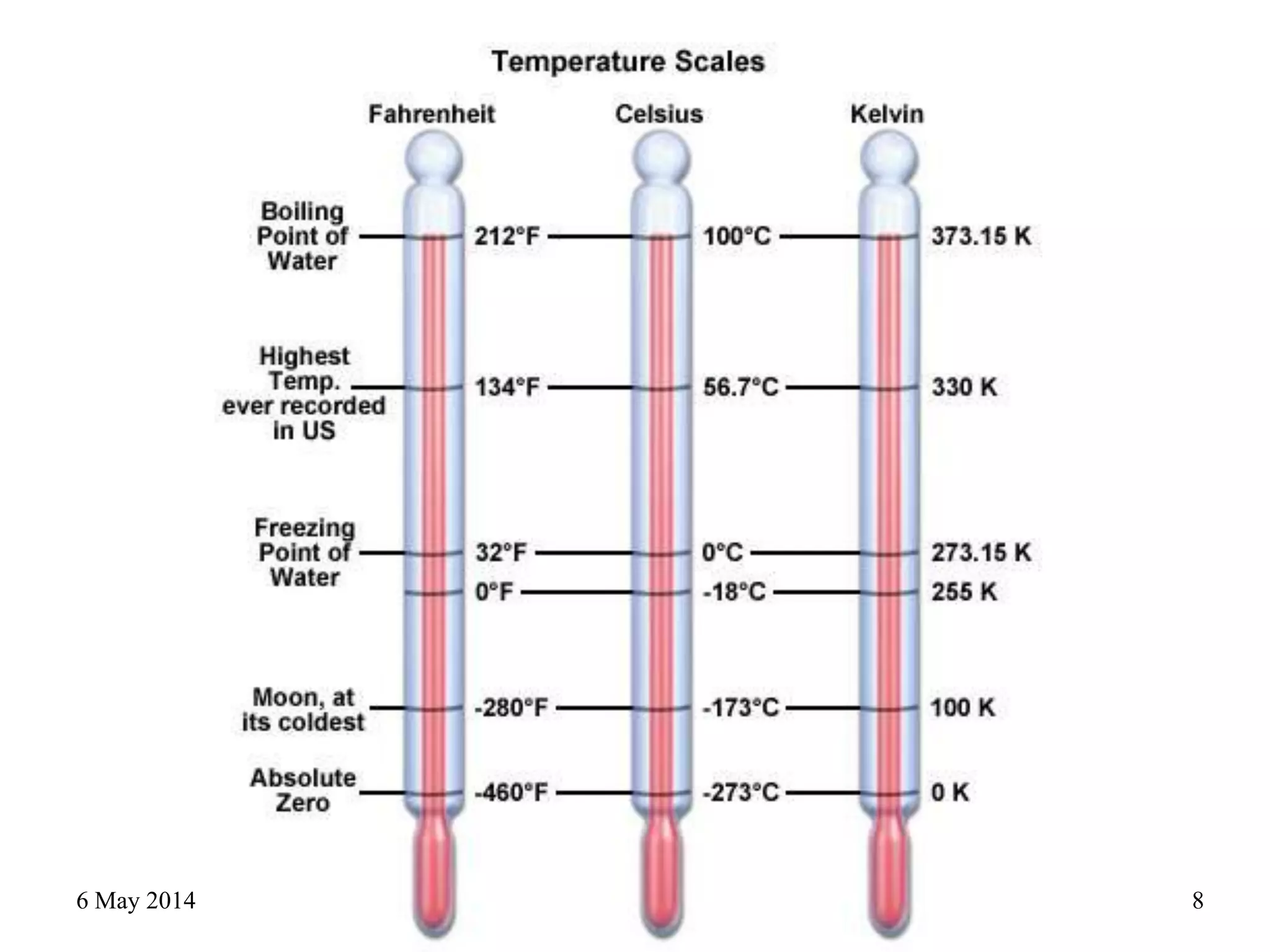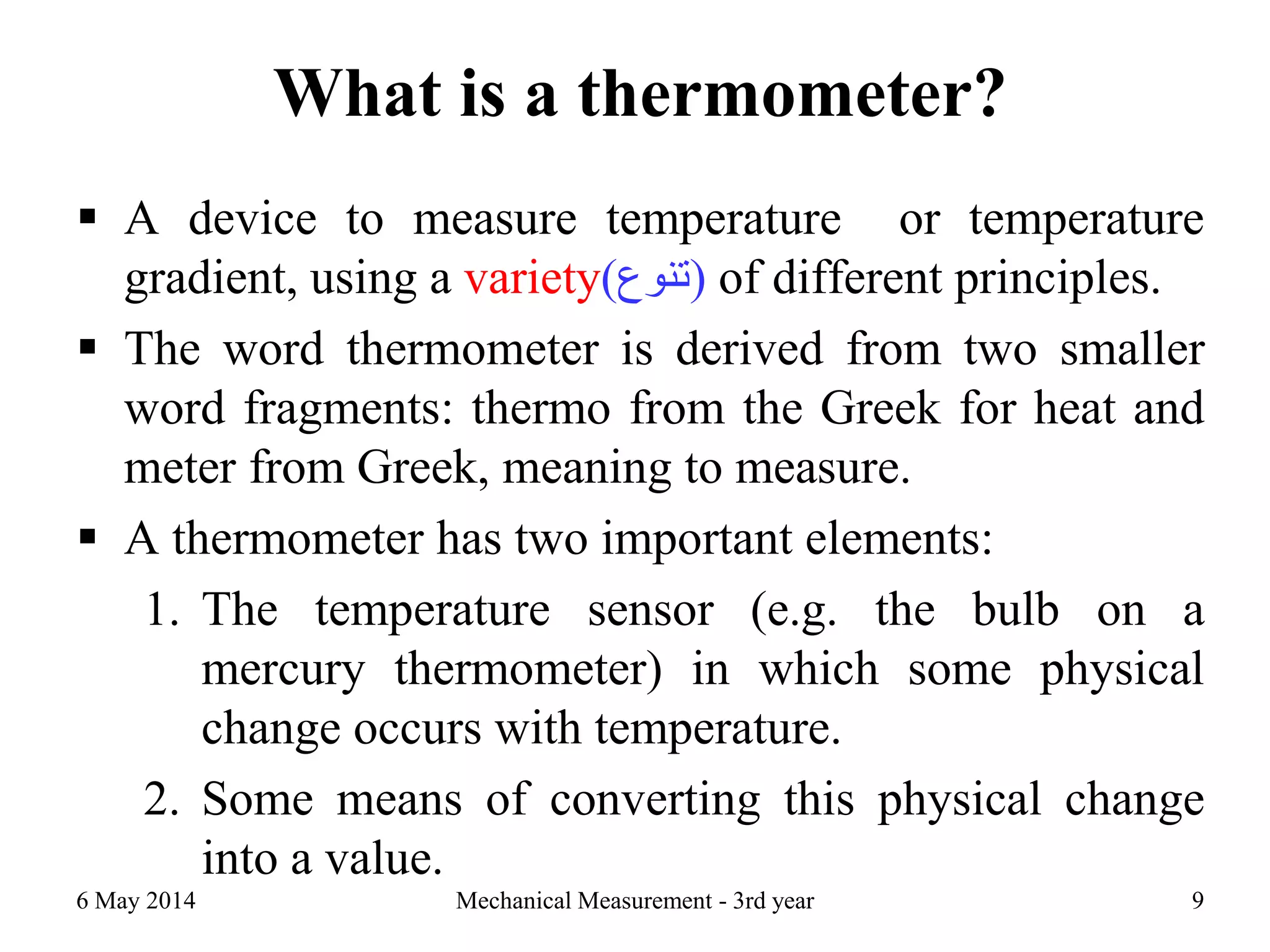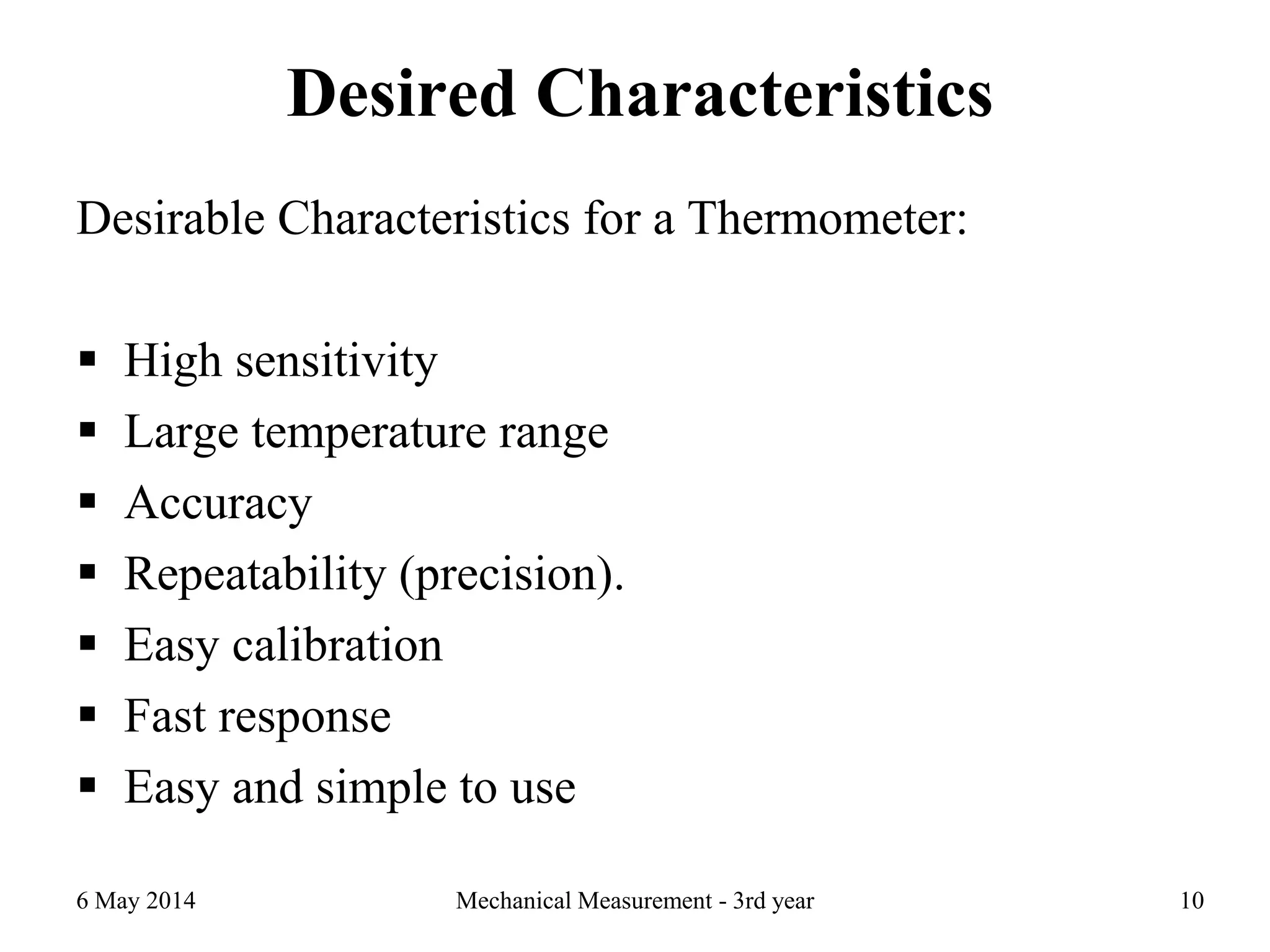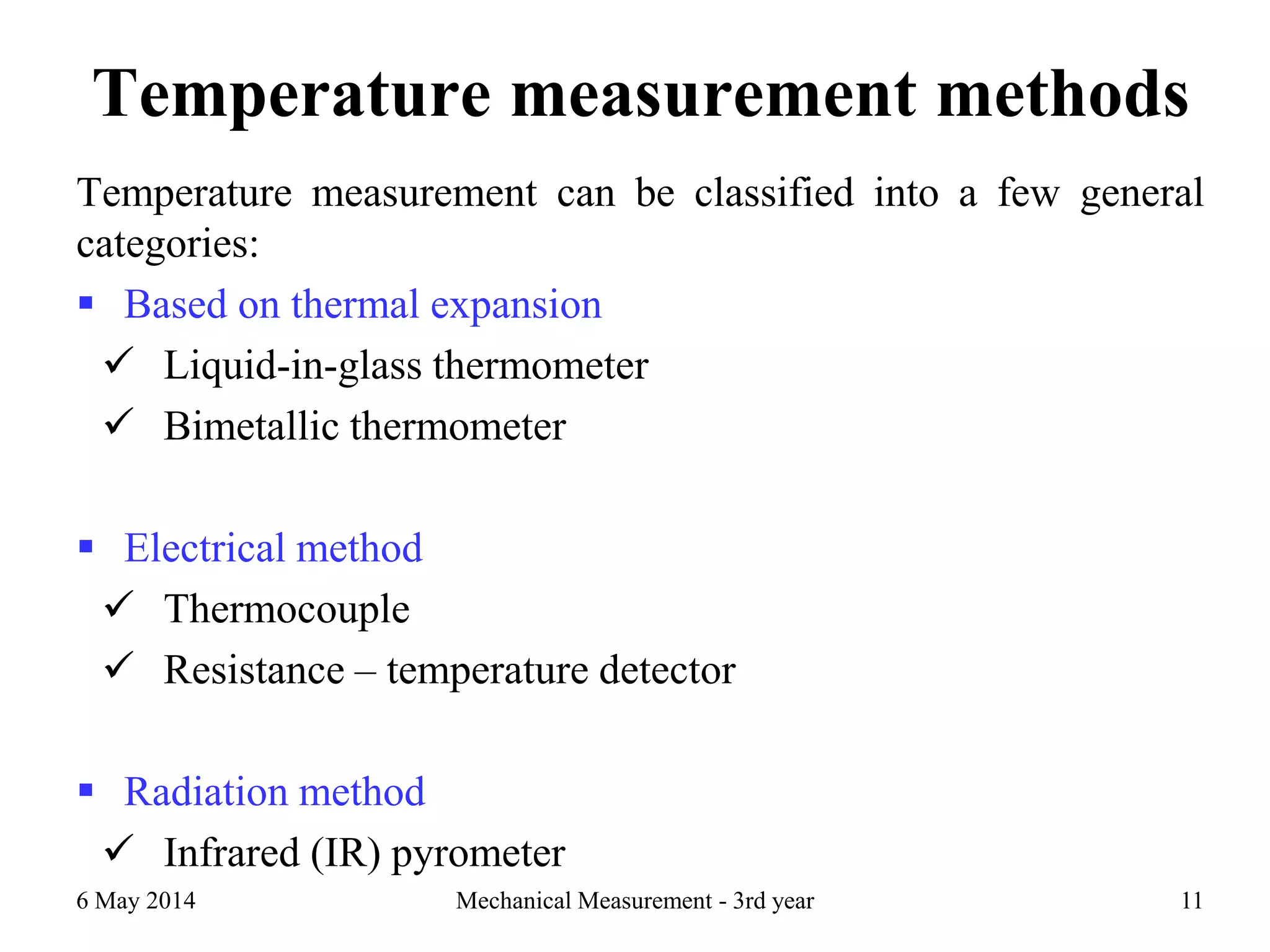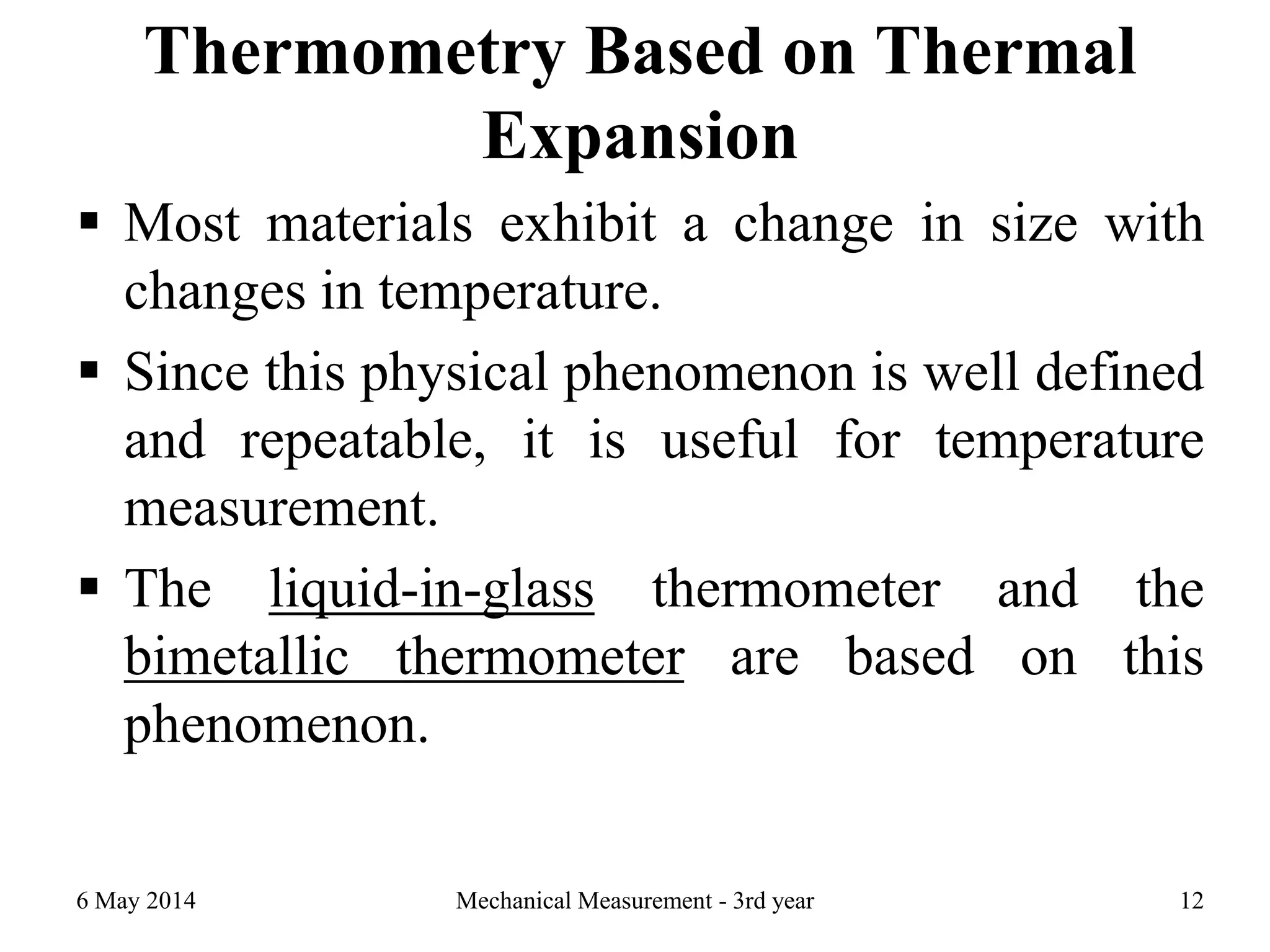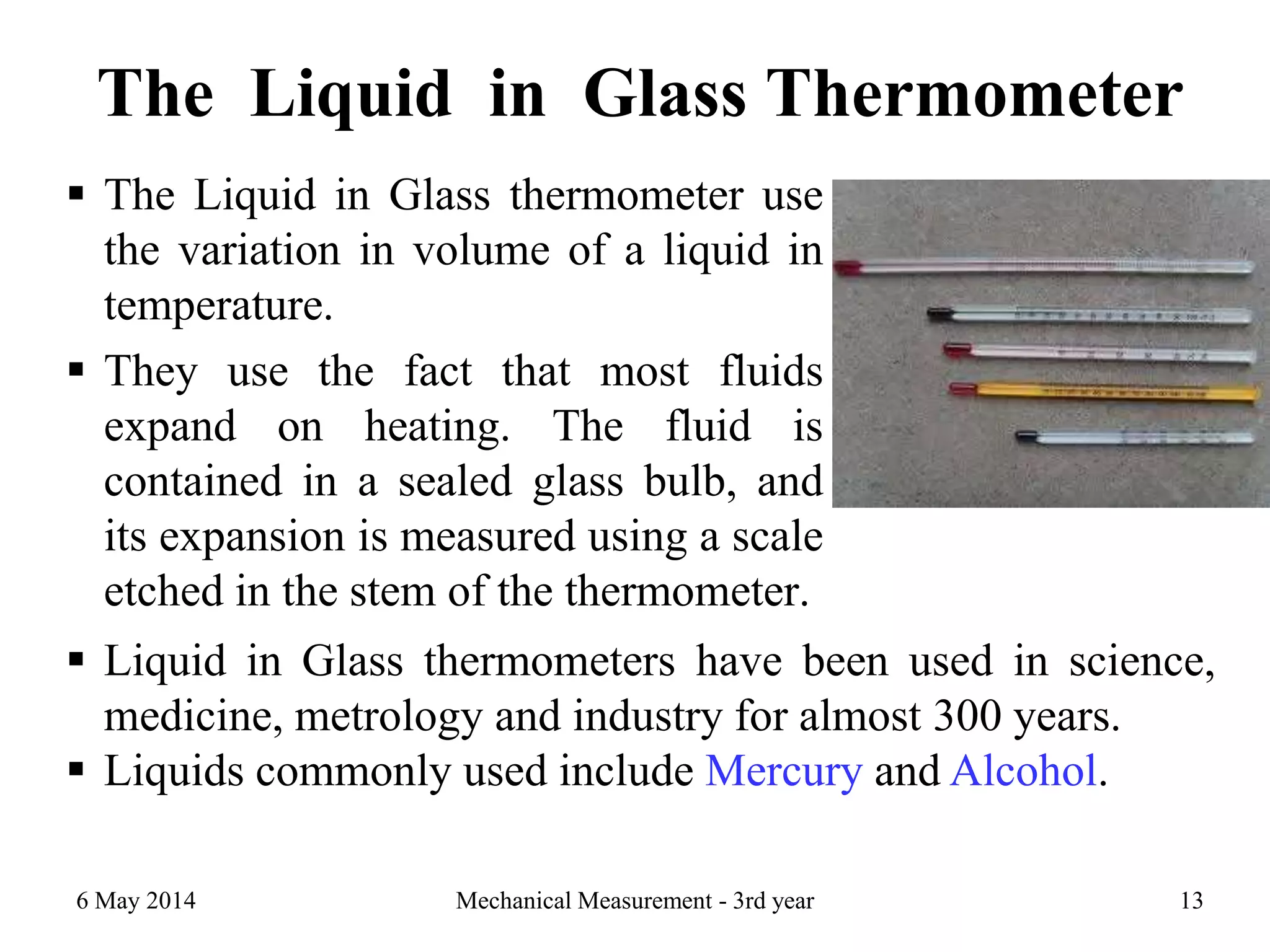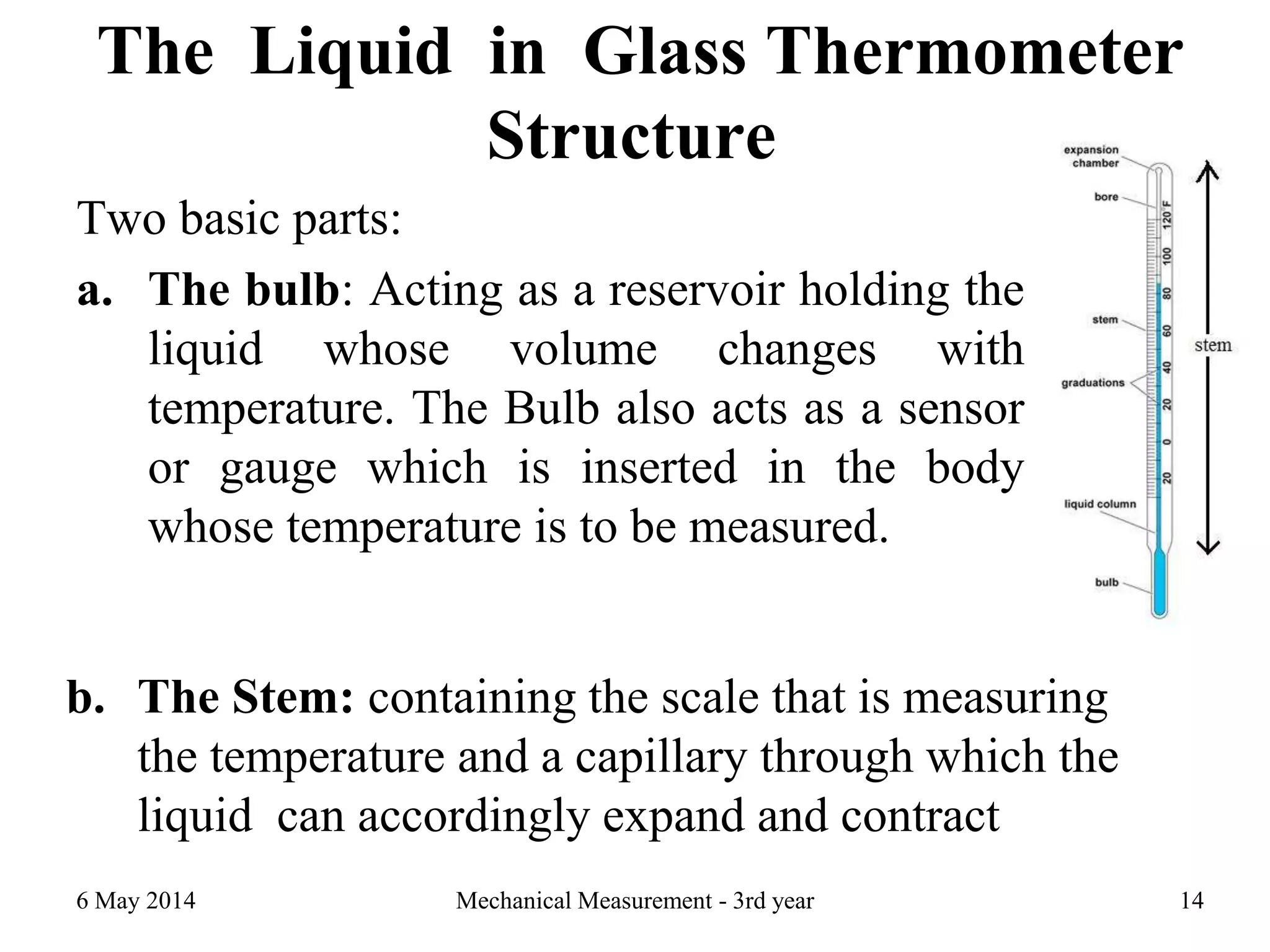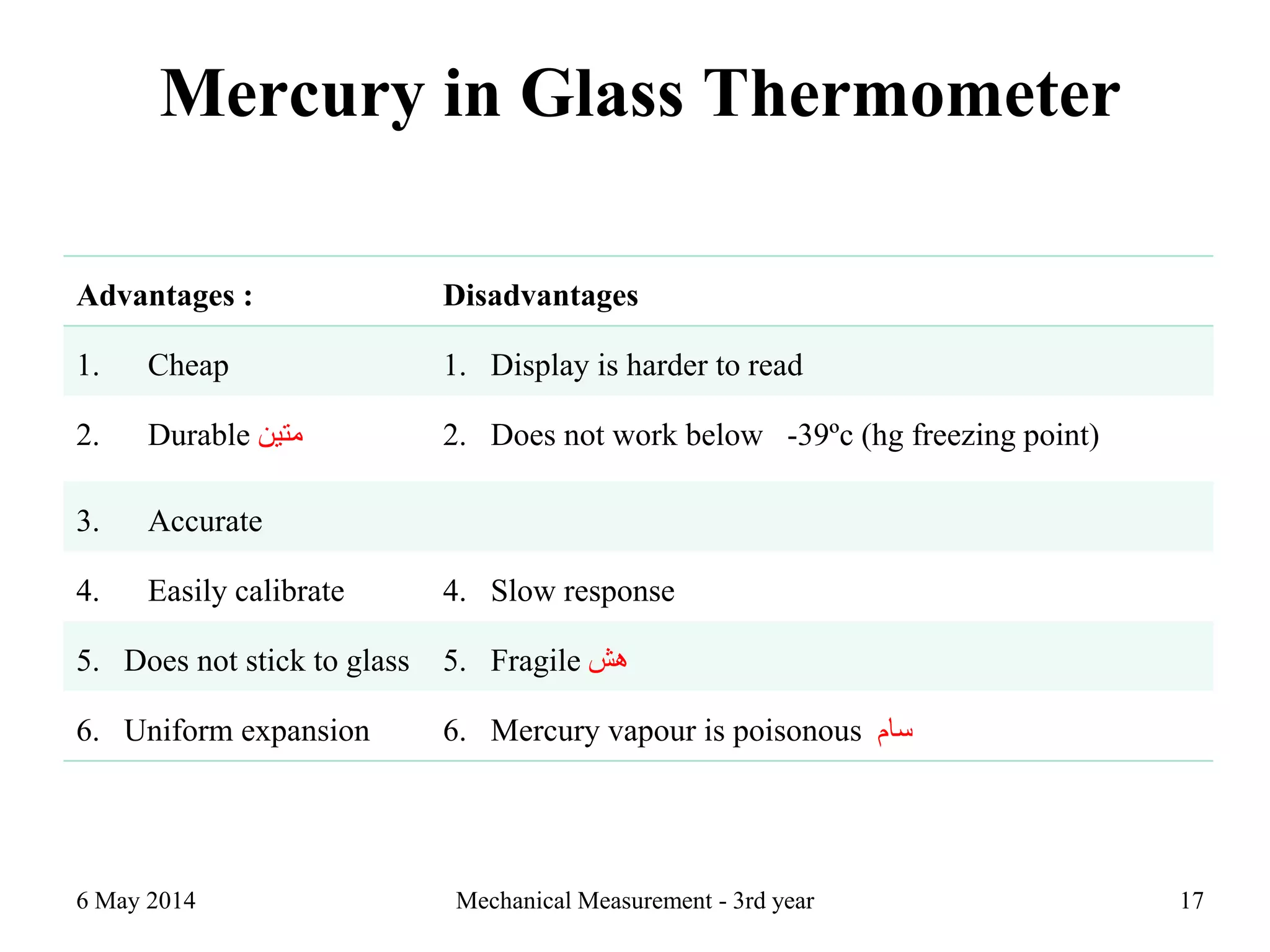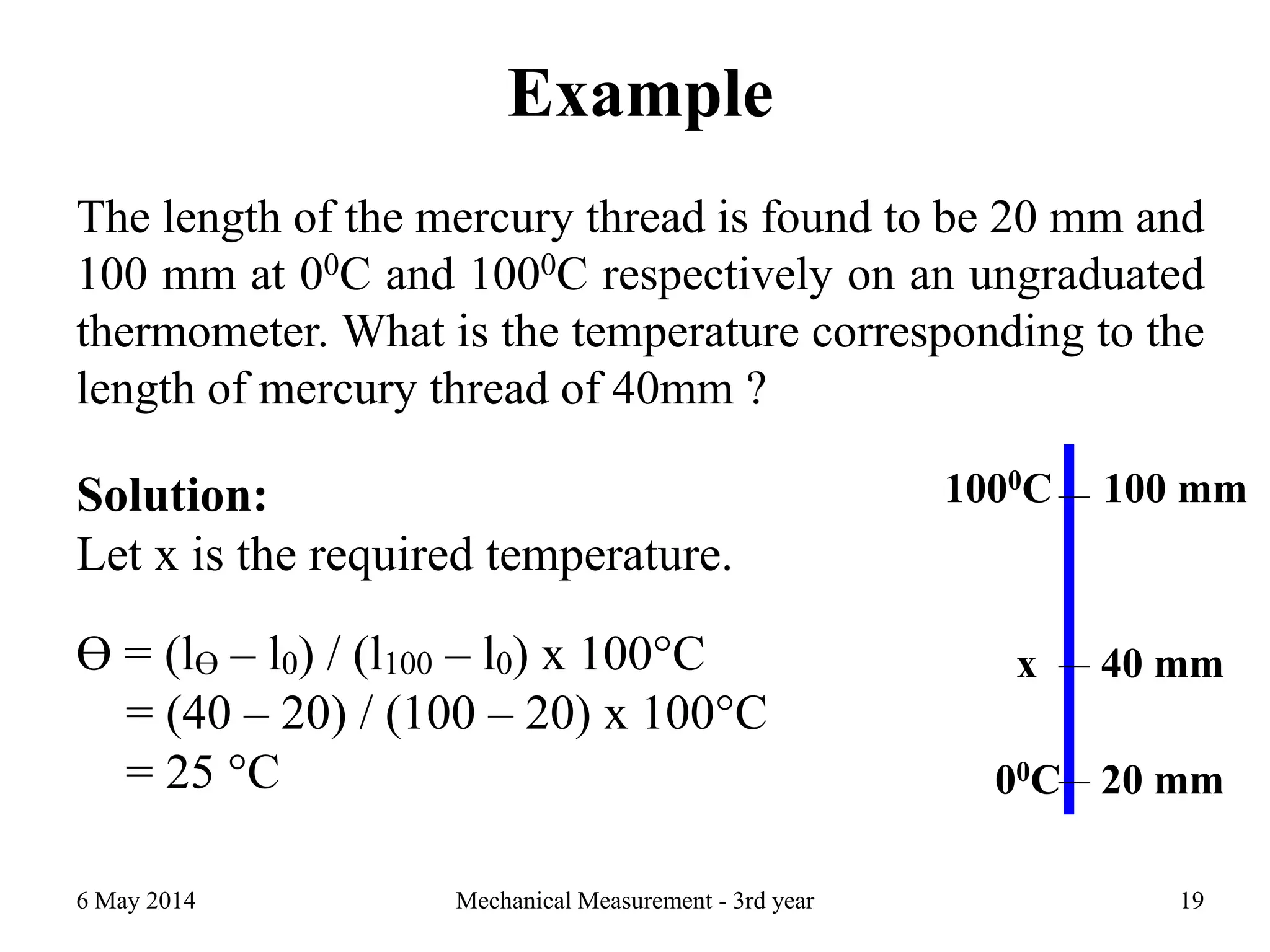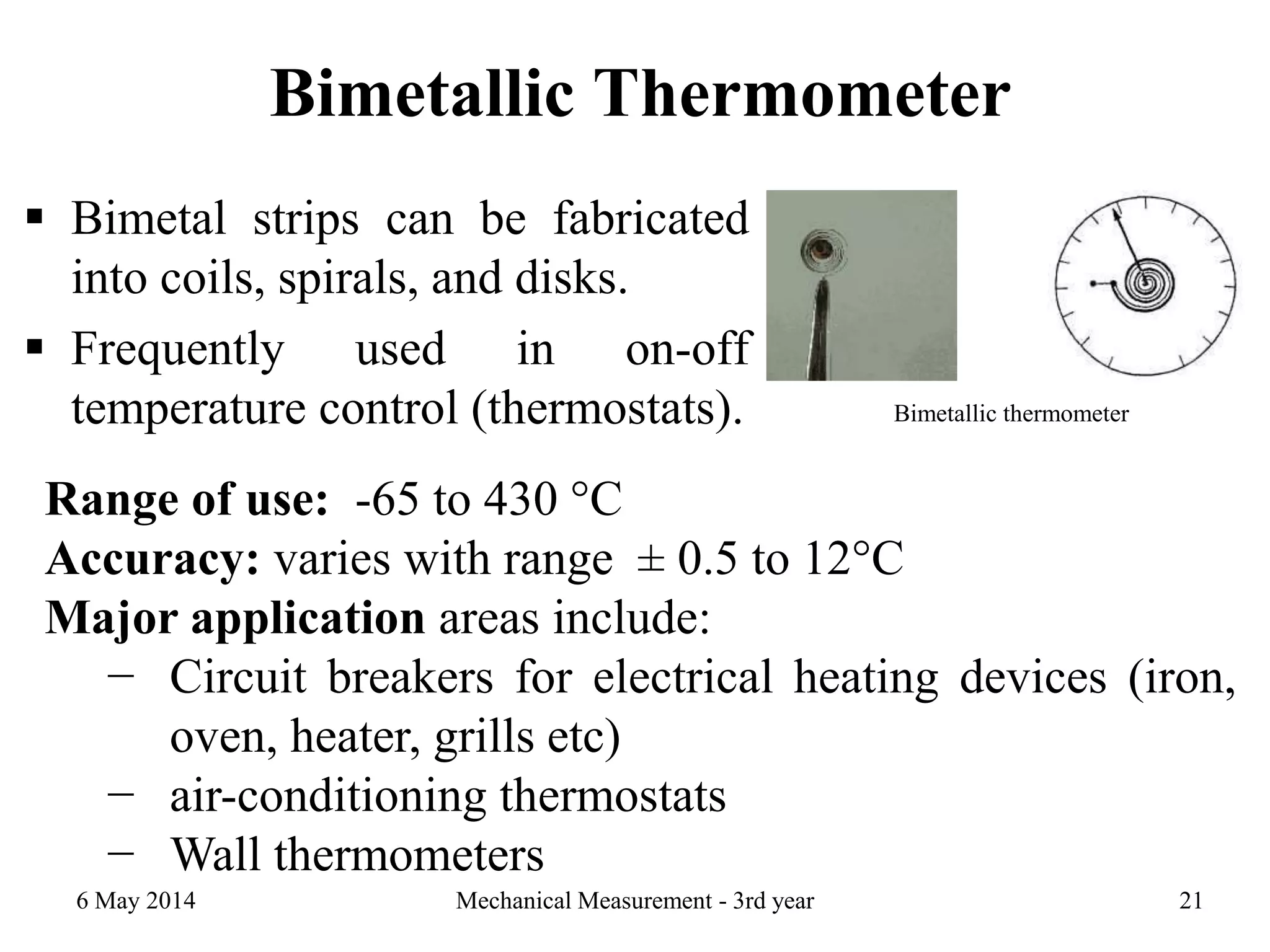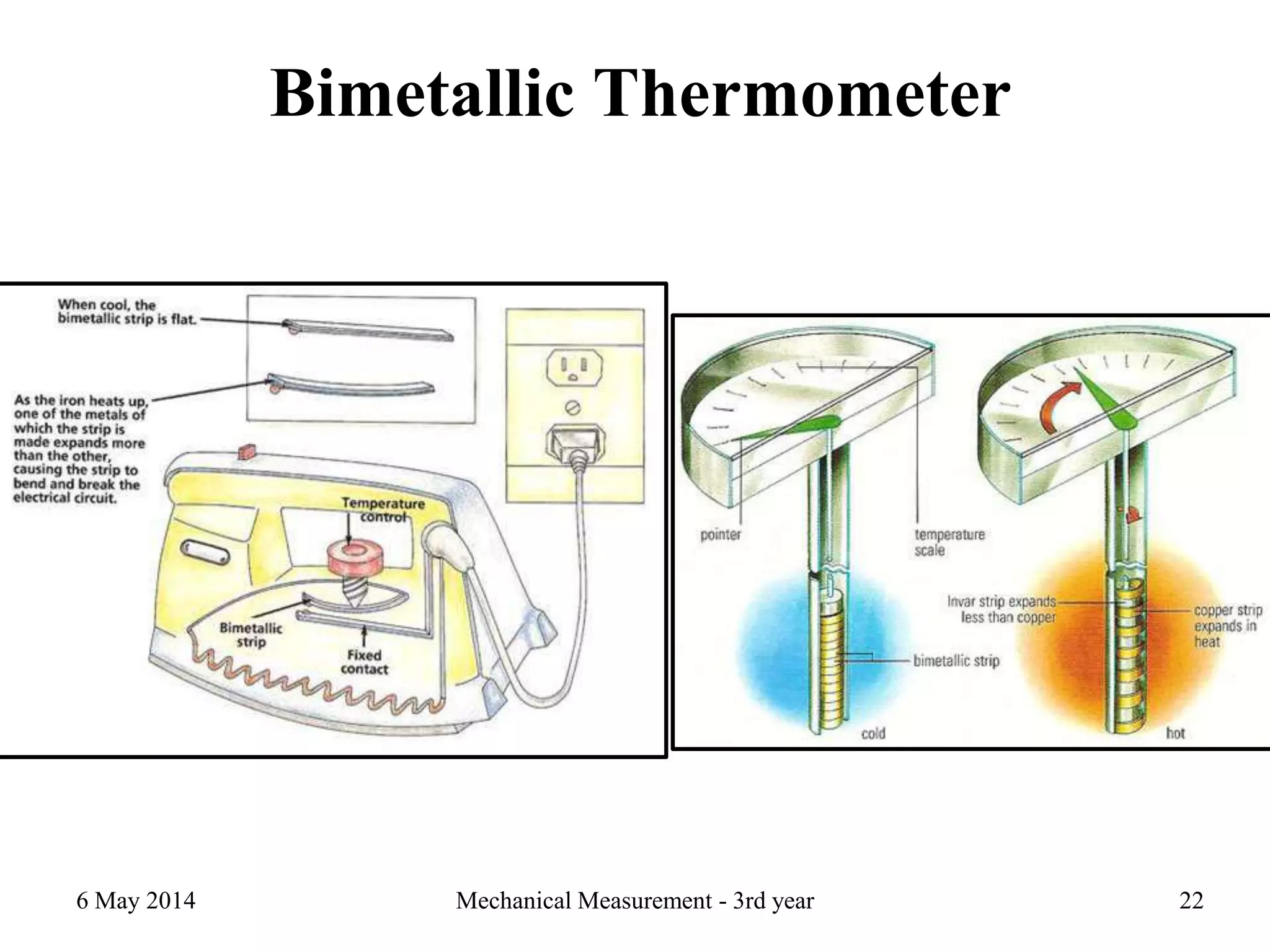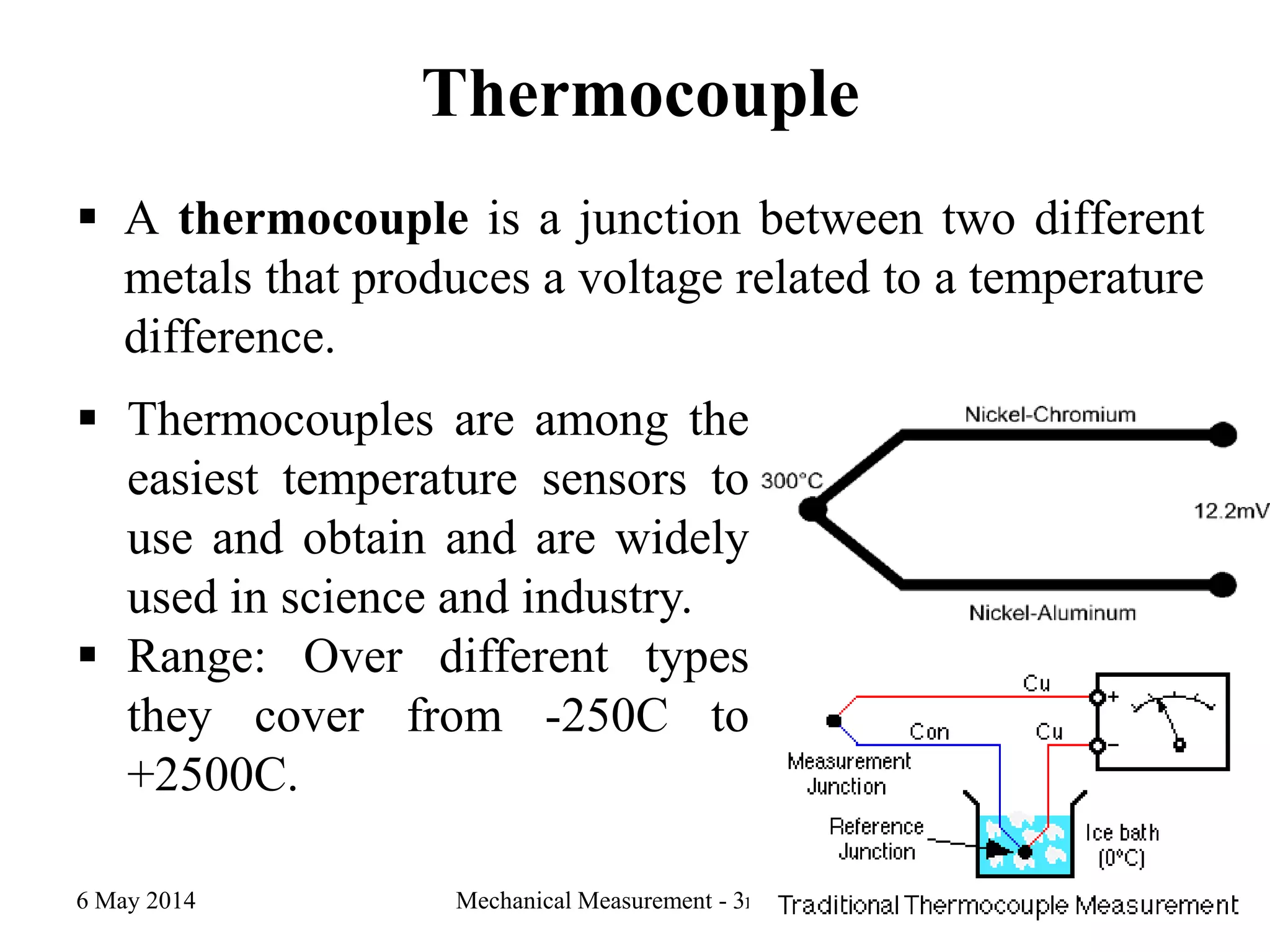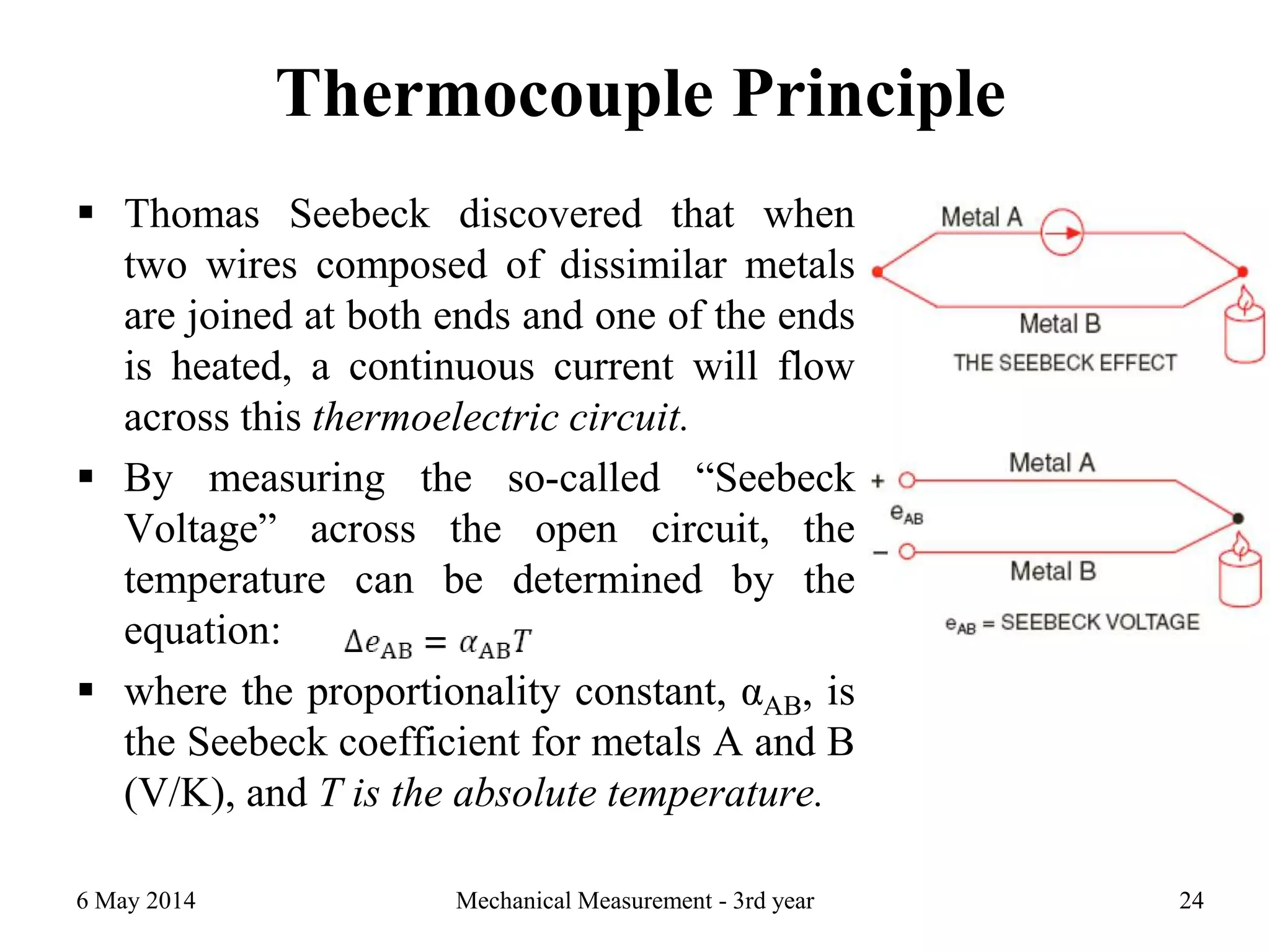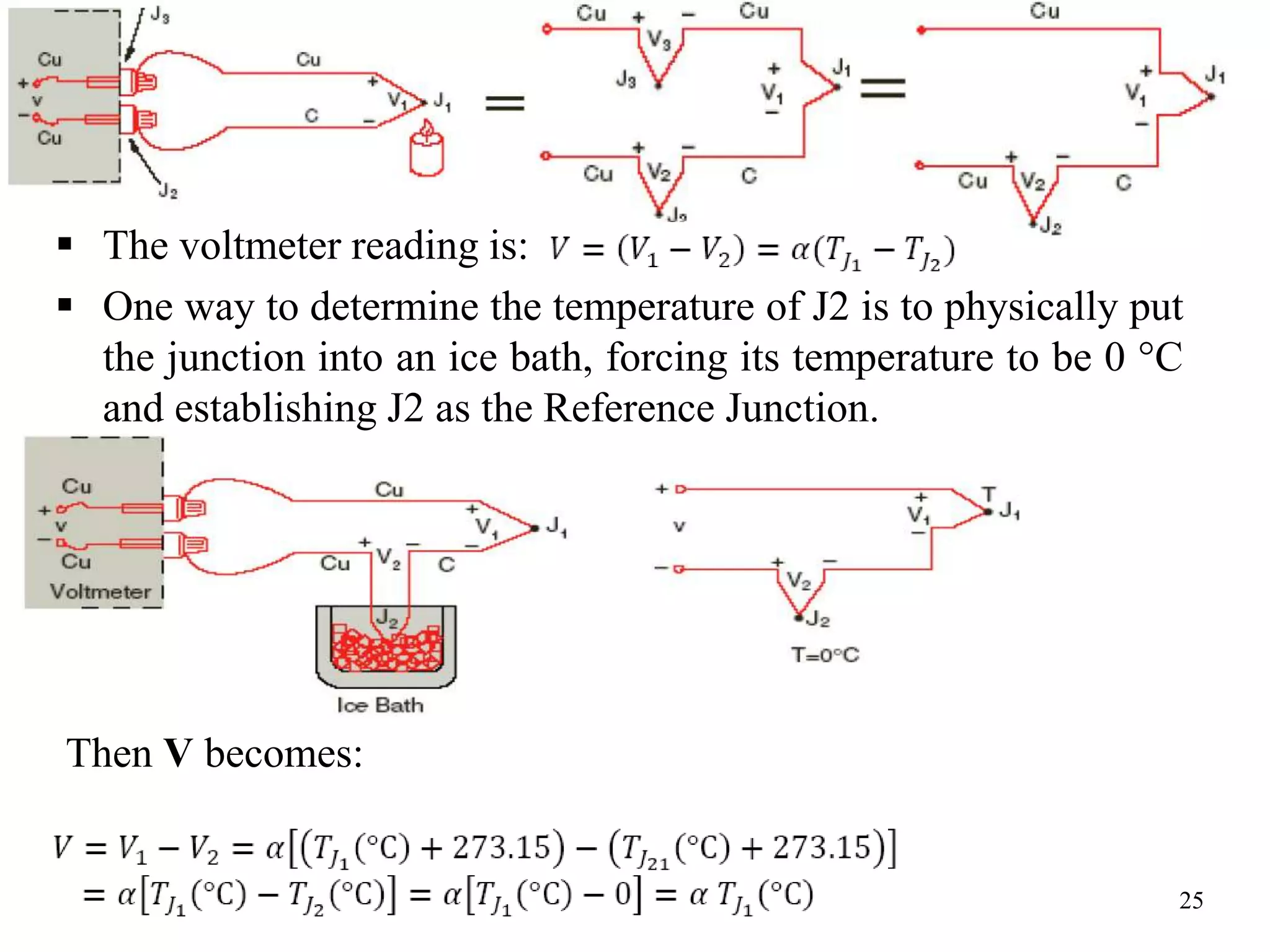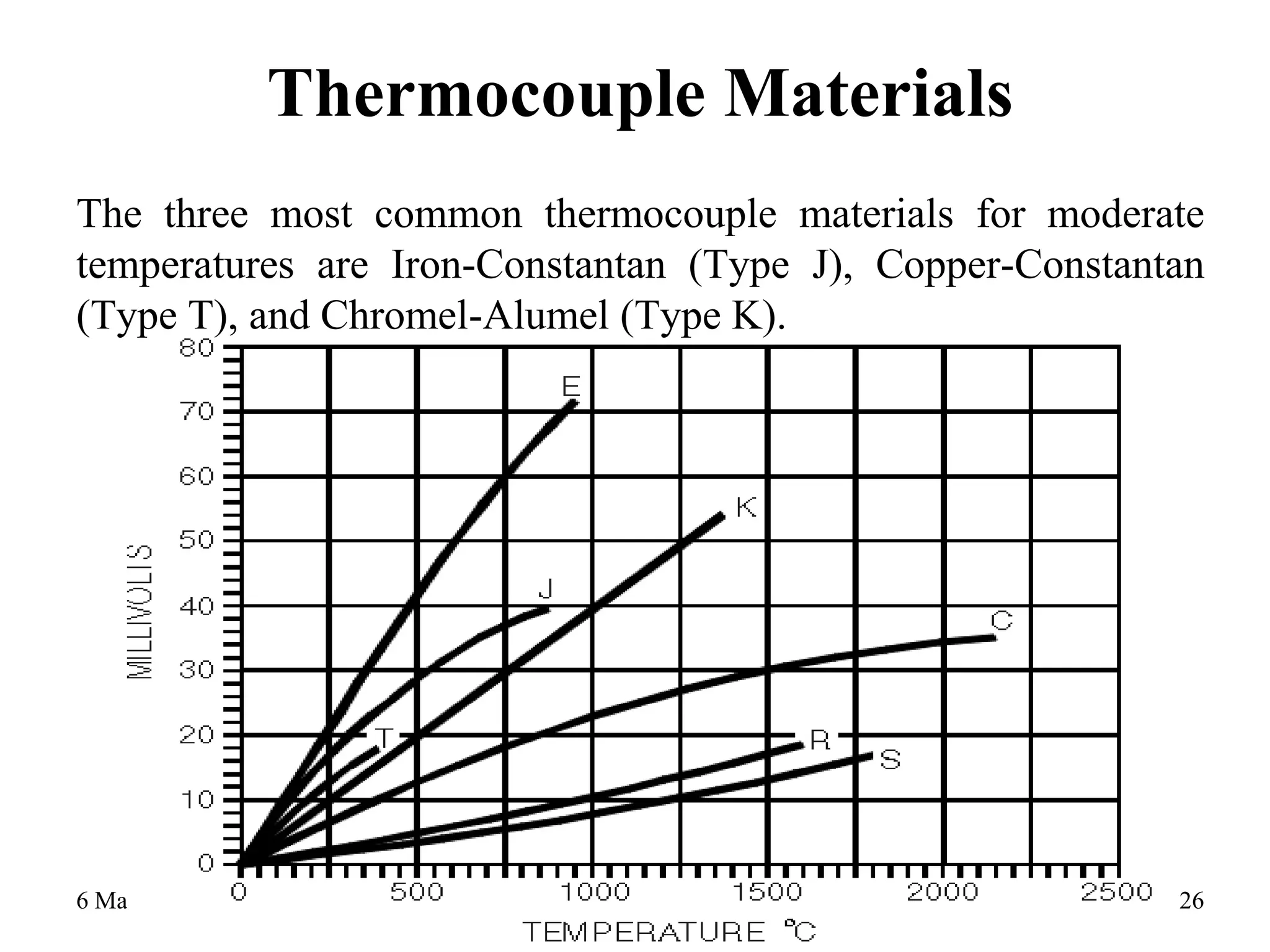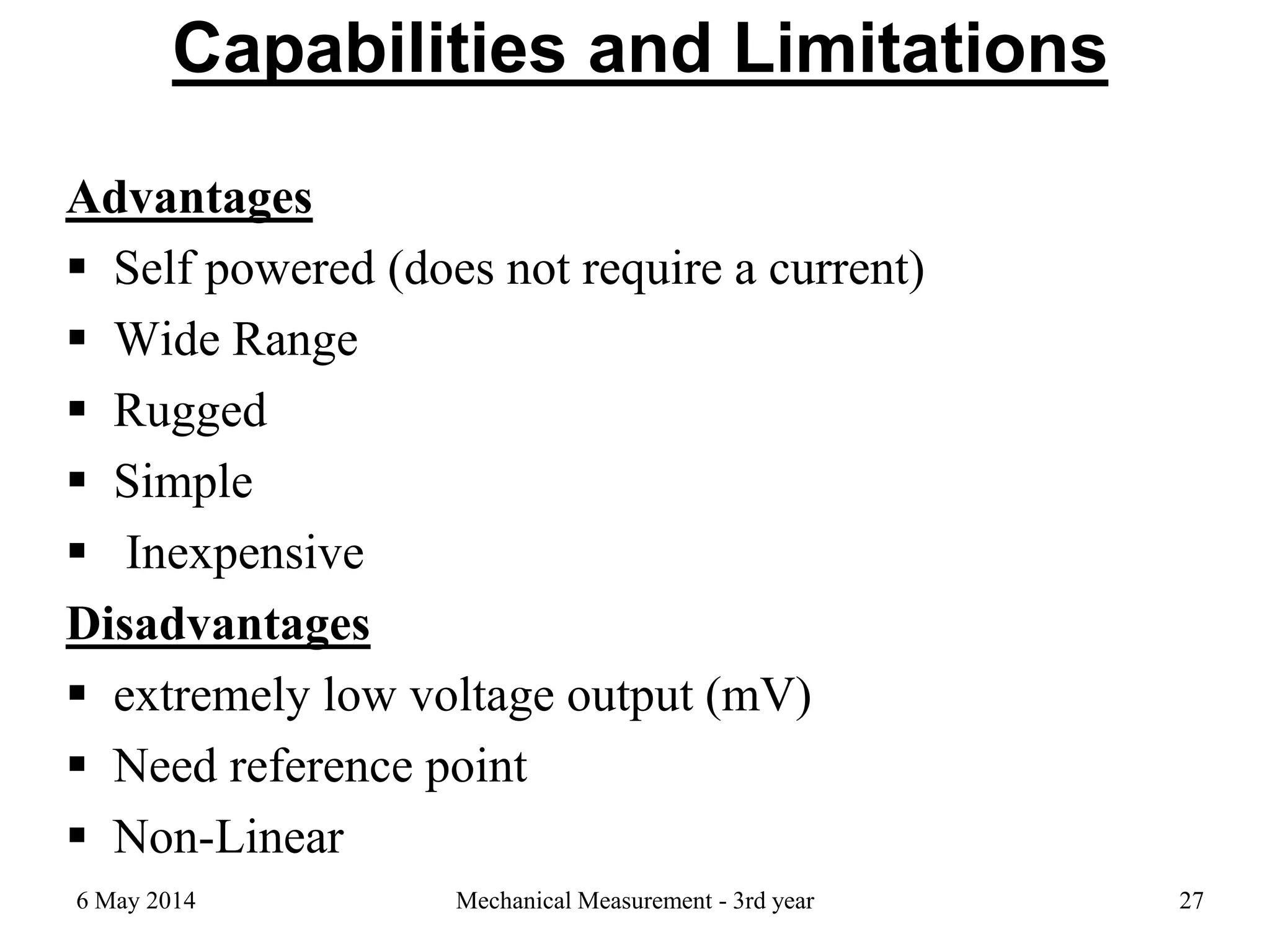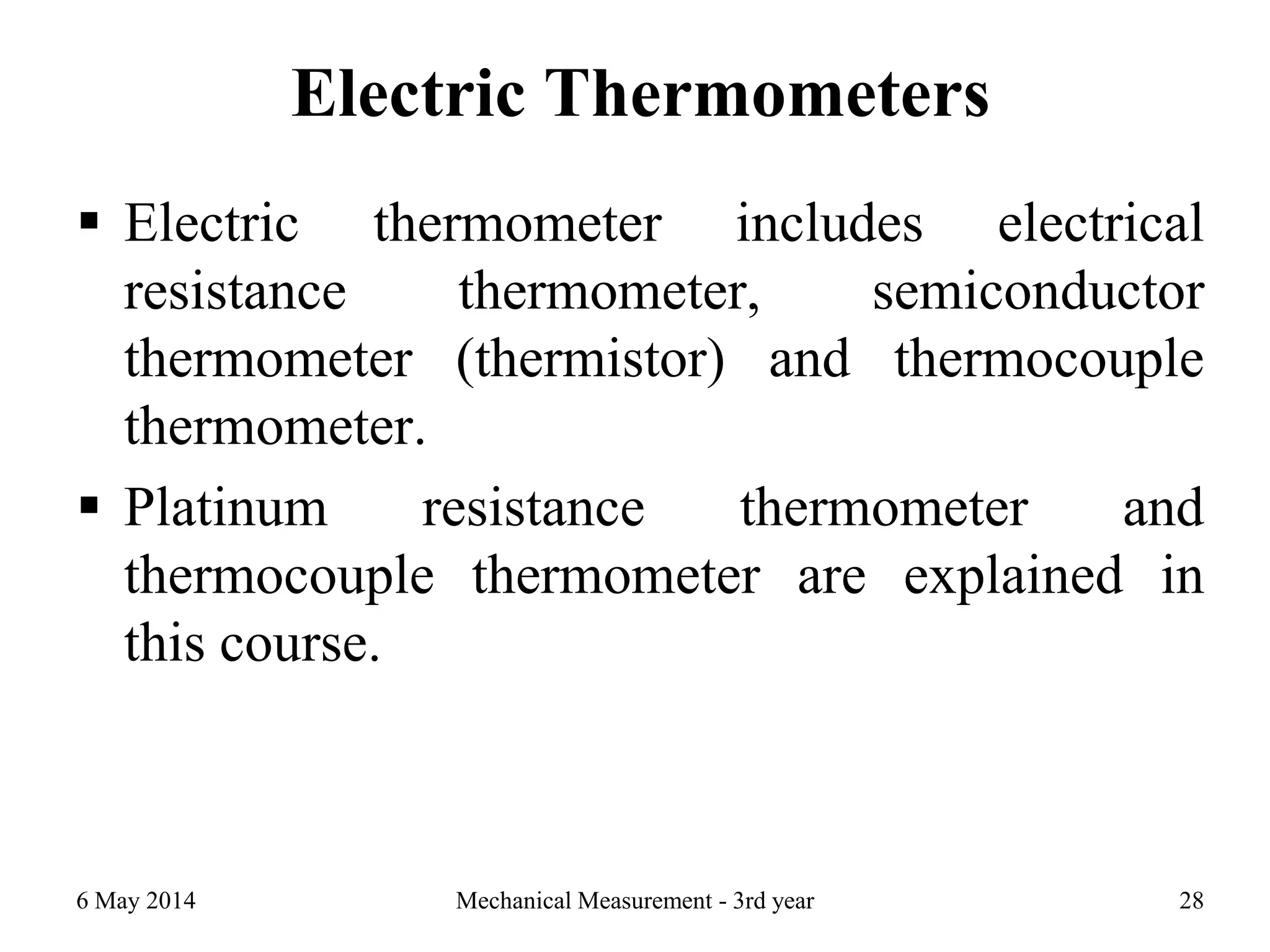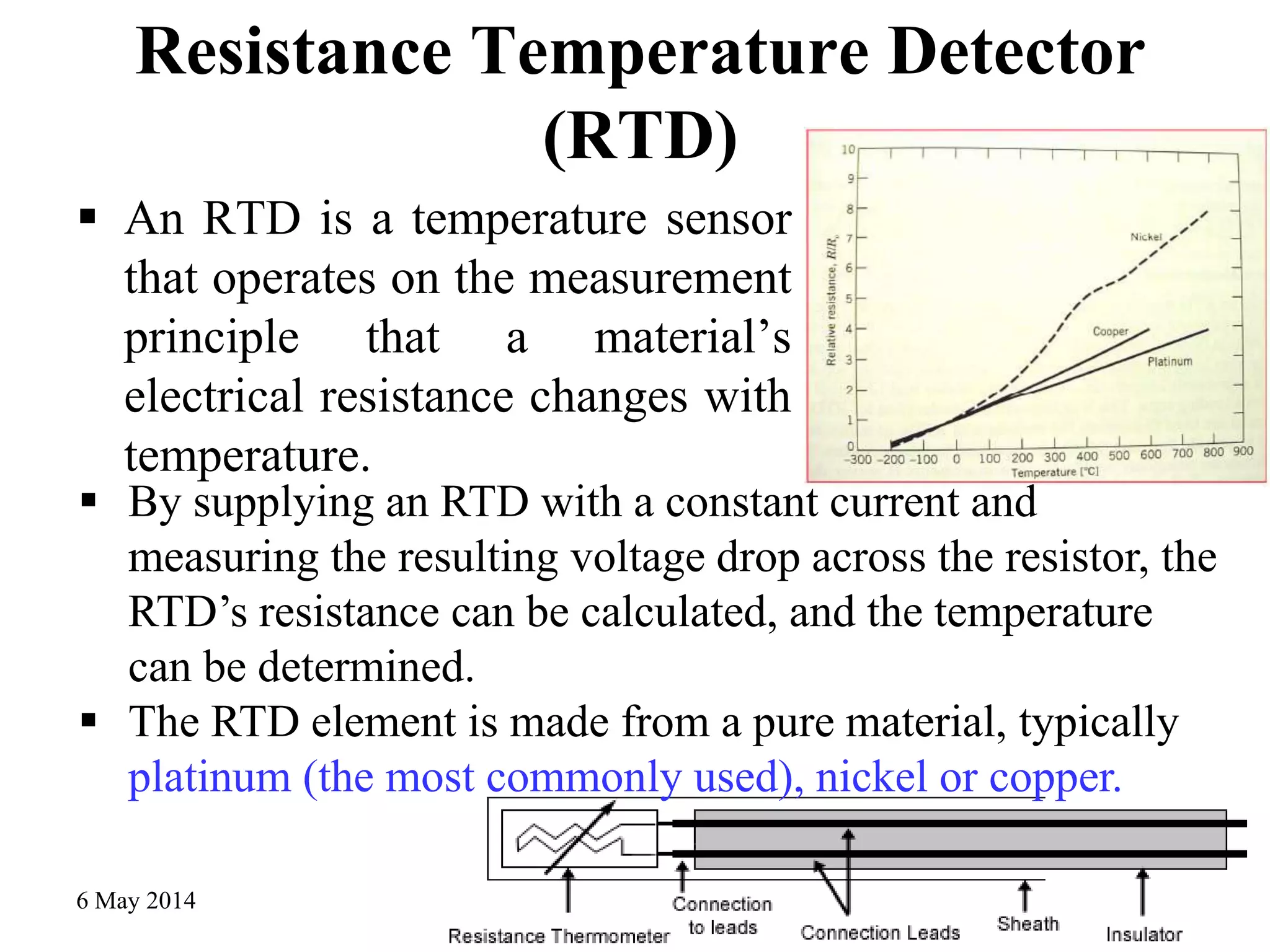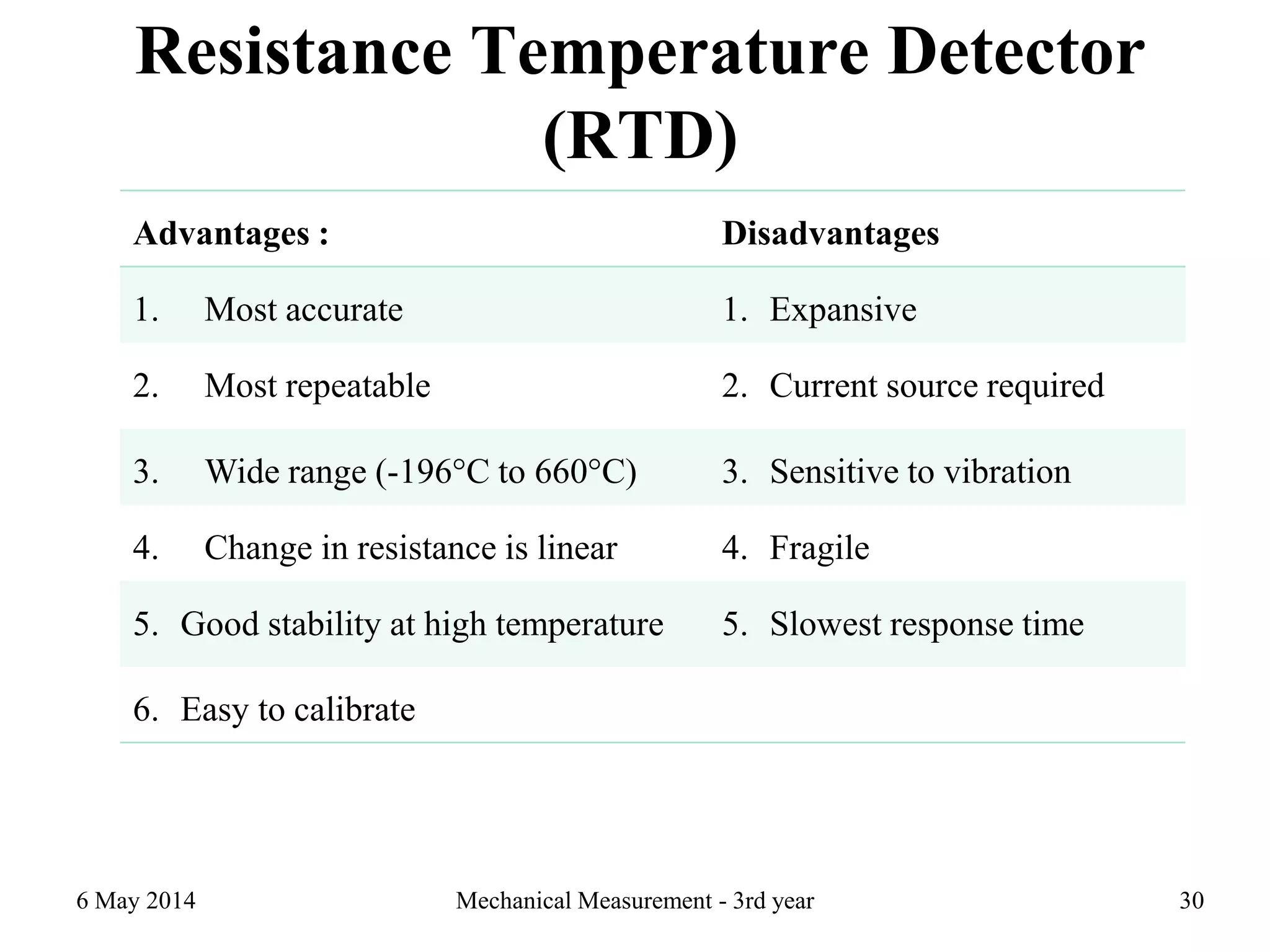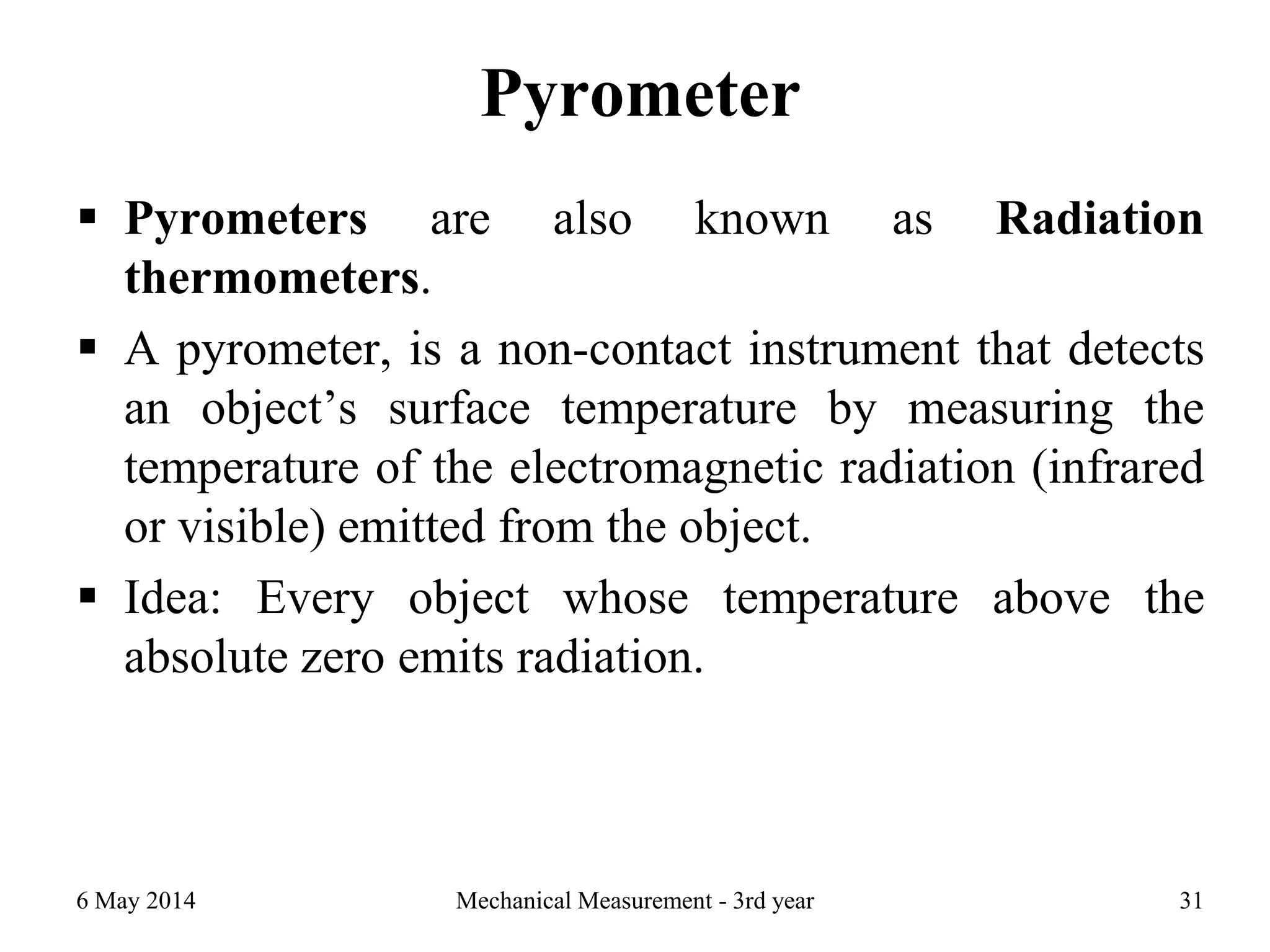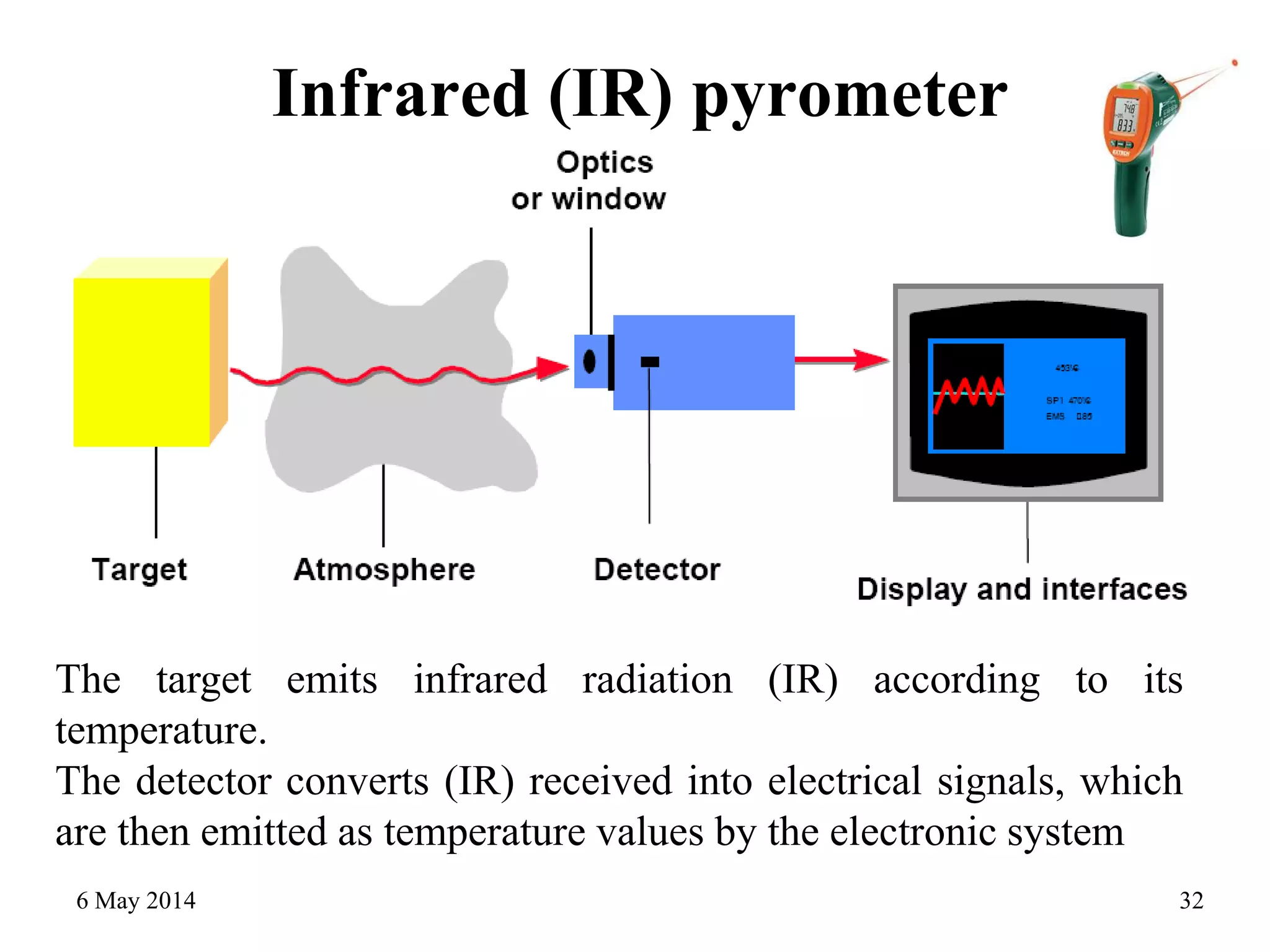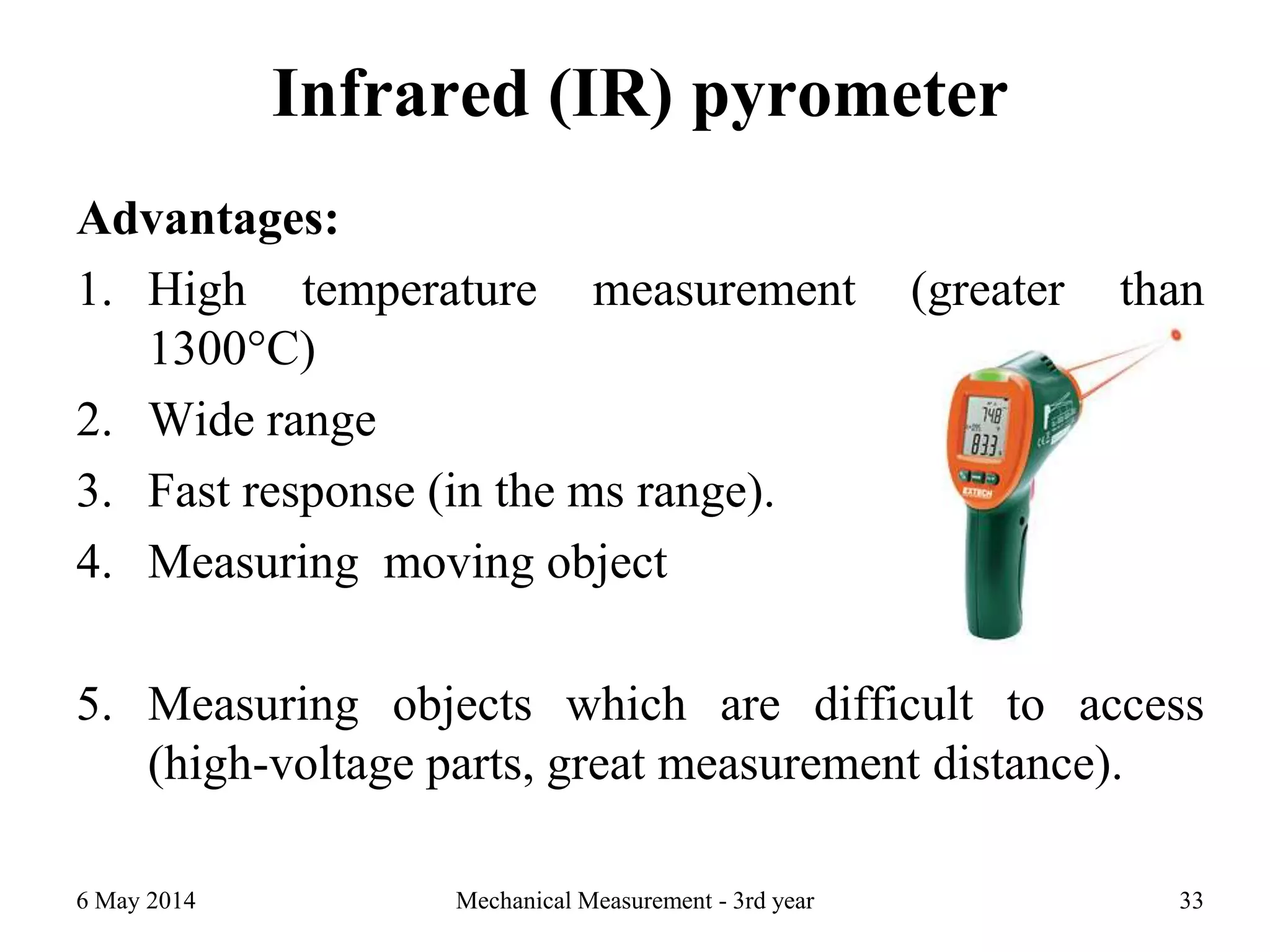The document discusses various methods of temperature measurement. It begins by defining temperature and describing common temperature scales such as Celsius, Fahrenheit, and Kelvin. It then discusses thermometers, noting that they have a temperature sensor and means of displaying the measured value. Common thermometer types are described in detail, including liquid-in-glass thermometers like mercury and alcohol thermometers, bimetallic thermometers, thermocouples, resistance temperature detectors (RTDs), and pyrometers. Each type's measurement technique, range, advantages, and disadvantages are summarized.
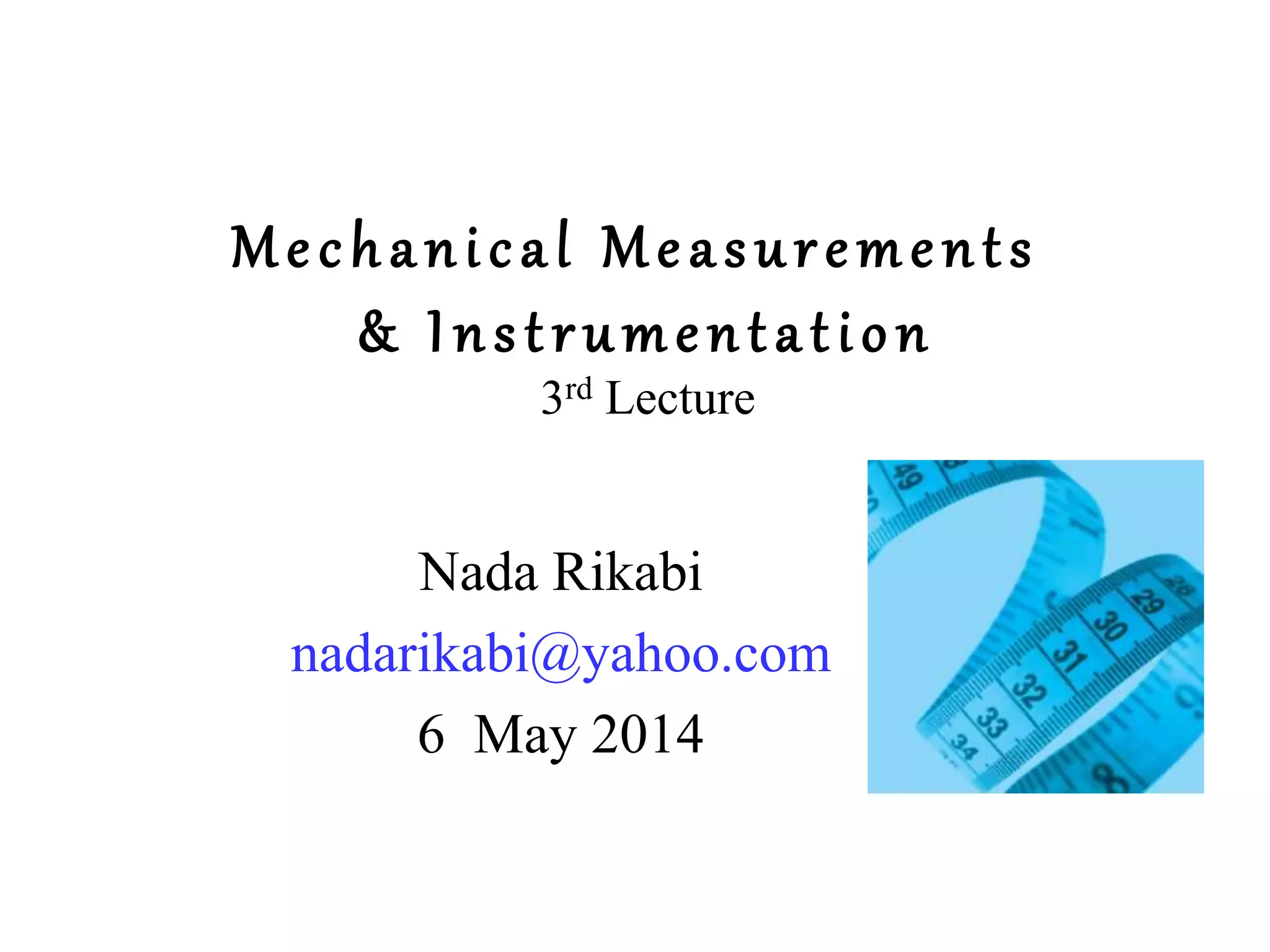
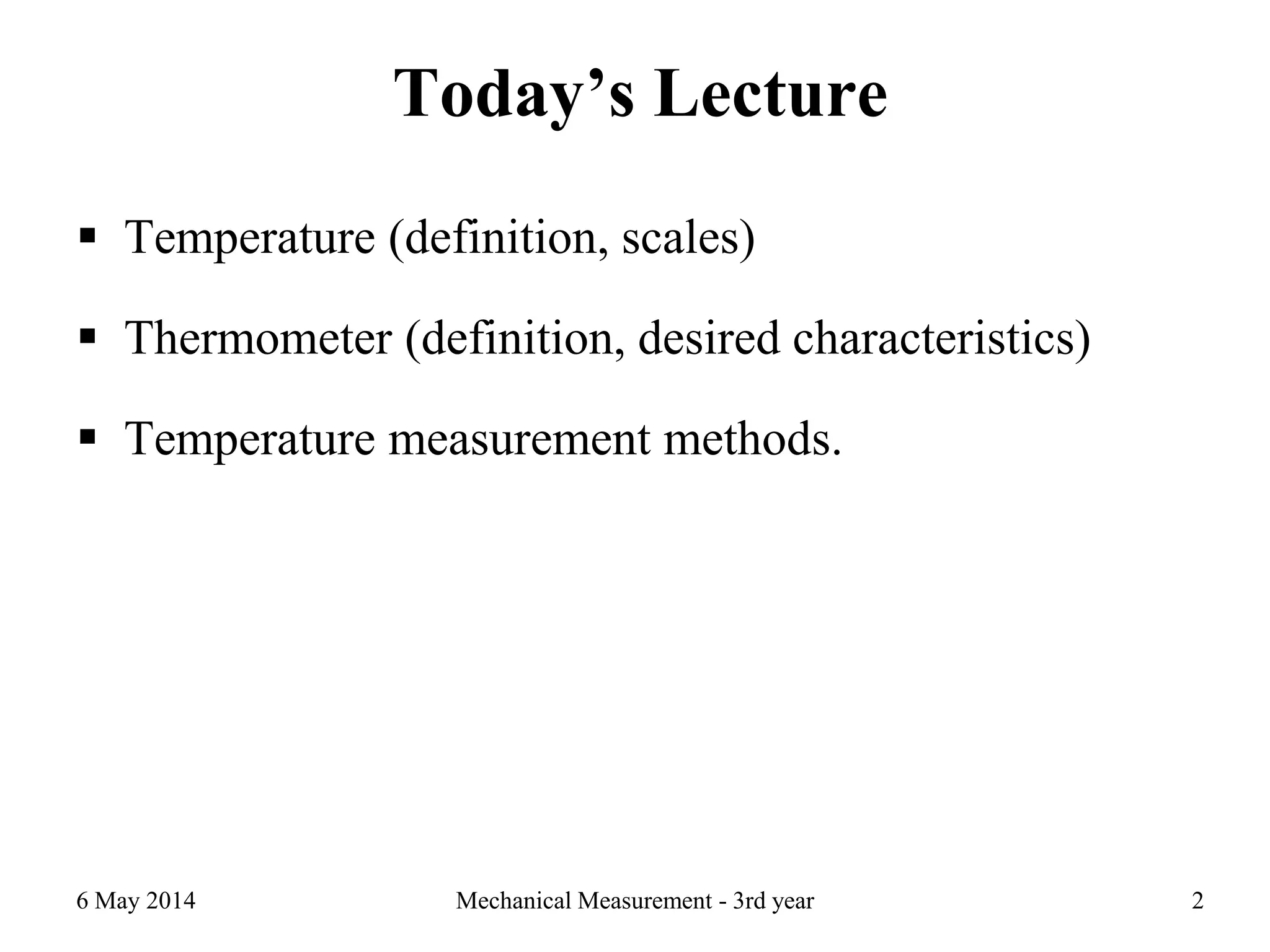
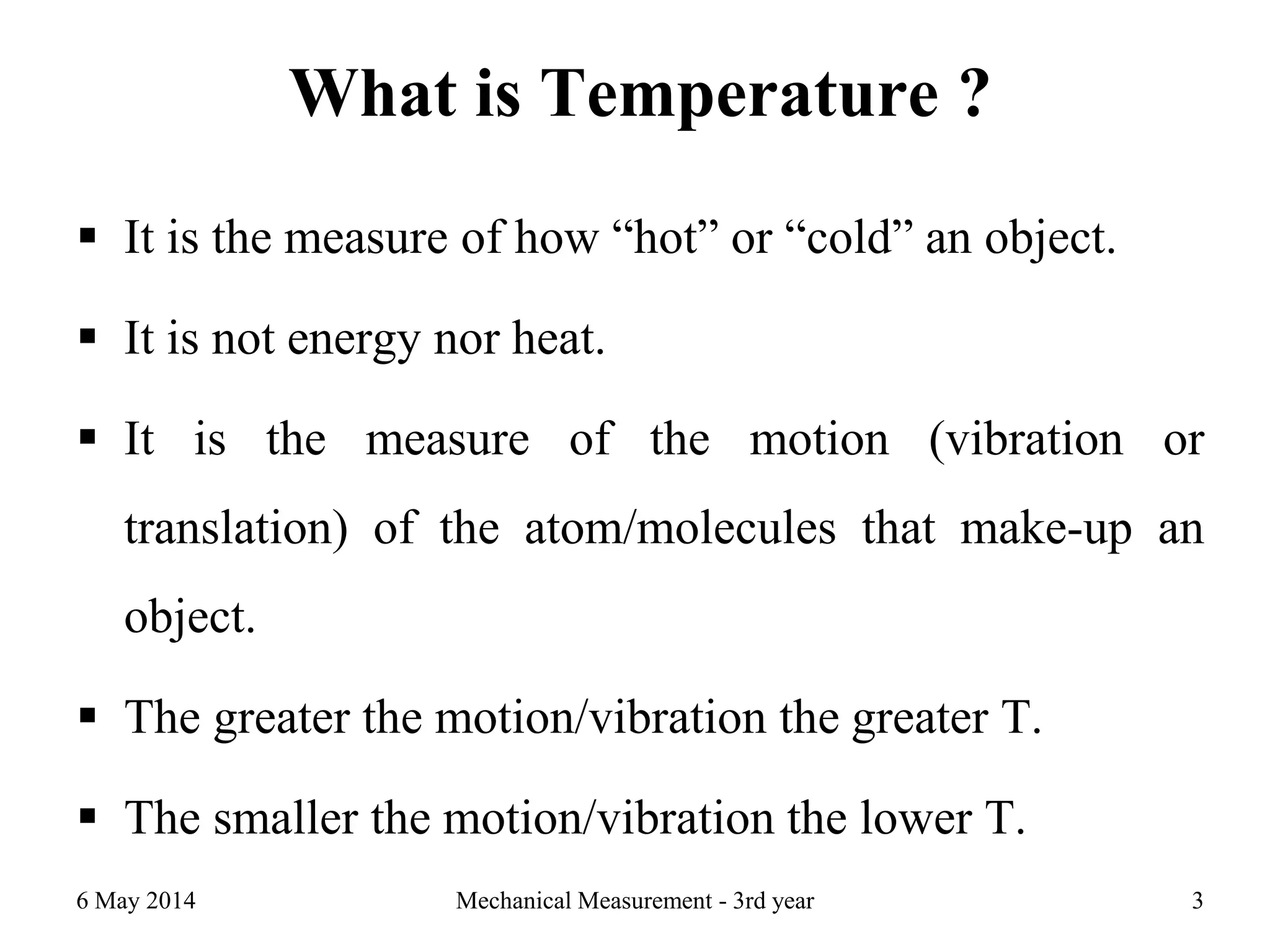

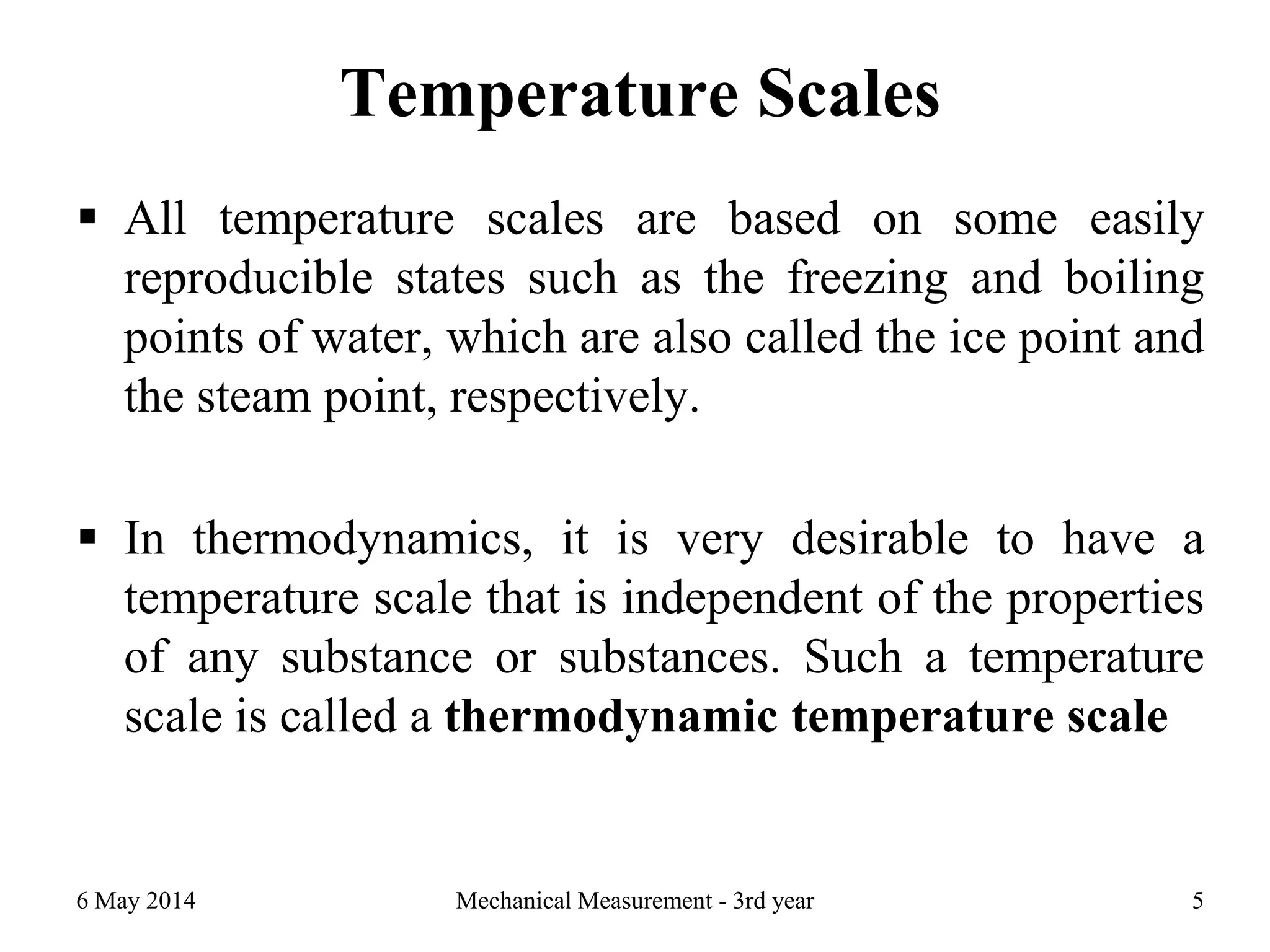
![Temperature Scales
Temperature is measured in 3 common scales:
1. Celsius or Centigrade [ºC] – used in SI system.
[The ice and steam points were originally assigned
the values of 0 and 100°C, respectively].
2. Fahrenheit [ºF] – used in the English system.
[The corresponding values of the ice and steam
points are 32 and 212°F].
3. Thermodynamic temperature scale :
Kelvin, K {note: units of Kelvin are not degrees K (ºK), just
K}, [SI system]
Rankine scale, R. [English system]
6 May 2014 Mechanical Measurement - 3rd year 6](https://image.slidesharecdn.com/measure3rdlec-150525133045-lva1-app6892/75/Measure-3rd-lec-6-2048.jpg)
